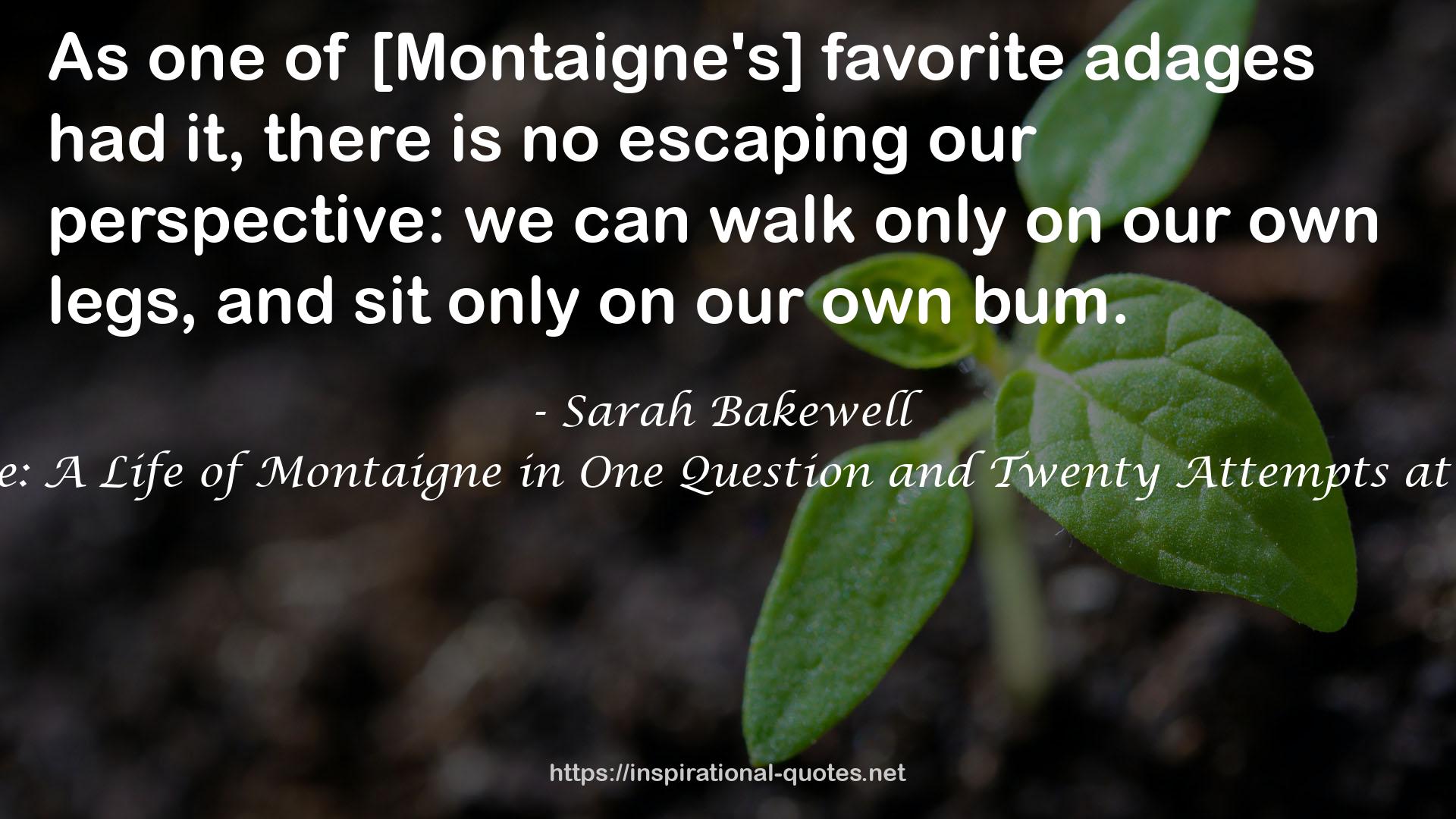22
" In an essay almost entirely about sex, Montaigne cites the wisdom of Aristotle: “A man … should touch his wife prudently and soberly, lest if he caresses her too lasciviously the pleasure should transport her outside the bounds of reason.” The physicians warned, too, that excessive pleasure could make sperm curdle inside the woman’s body, rendering her unable to conceive. It was better for the husband to bestow ecstasy elsewhere, where it did not matter what damage it caused. “The kings of Persia,” relates Montaigne, “used to invite their wives to join them at their feasts; but when the wine began to heat them in good earnest and they had to give completely free rein to sensuality, they sent them back to their private rooms.” They then brought on a more suitable set of women. "
― Sarah Bakewell , How to Live: A Life of Montaigne in One Question and Twenty Attempts at an Answer
40
" Contemporary demonologist Jean Bodin argued that, in crisis conditions such as these, standards of evidence must be lowered. Witchcraft was so serious, and so hard to detect using normal methods of proof, that society could not afford to adhere too much to “legal tidiness and normal procedures.” Public rumor could be considered “almost infallible”: if everyone in a village said that a particular woman was a witch, that was sufficient to justify putting her to the torture. Medieval techniques were revived specifically for such cases, including “swimming” suspects to see if they floated, and searing them with red-hot irons. The numbers of convicted witches kept rising as standards of evidence went down, and the increase amounted to further proof that the crisis was real and that further adjustment of the law was necessary. As history has repeatedly suggested, nothing is more effective for demolishing traditional legal protections than the combined claims that a crime is uniquely dangerous, and that those behind it have exceptional powers of resistance. It was all accepted with hardly a murmur, except by a few writers such as Montaigne, who pointed out that torture was useless for getting at the truth since people will say anything to stop the pain—and that, besides, it was “putting a very high price on one’s conjectures” to have someone roasted alive on their account. "
― Sarah Bakewell , How to Live: A Life of Montaigne in One Question and Twenty Attempts at an Answer

